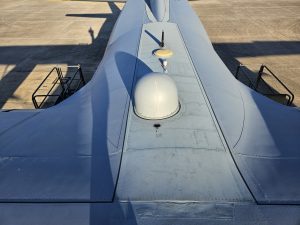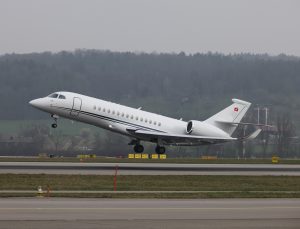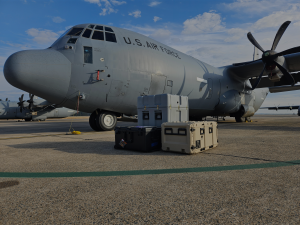An STC from the TCCA, FAA, EASA and ANAC? That’s quite the alphabet soup of acronyms, but when it comes to STC generation, they are as essential to cover as your ABCs. An STC Supplemental Type Certificate represents the official approval from the aviation authorities that allows for modifications or alterations to an aircraft outside the scope of its original type certificate. You may need an STC if you’re going to add technology to your aircraft or if you want to reconfigure your interior using new types of materials. This can be as basic as adding a cup holder to the flight deck or a significant piece of hardware like an antenna.
As we continue developing the purpose-built Plane Simple® terminals for business aviation, we, too, have to navigate through STC processes. This is not a singular task; we’ve worked with our engineering and MRO partners and the aviation authorities to source the approvals. Our goal? To make the acquisition and installation process more streamlined for our customers.
Transport Canada (TCCA), the Federal Aviation Administration (FAA) in the United States and the European Union Aviation Safety Agency (EASA), as well as Brazil’s Agência Nacional de Aviação Civil, ANAC have all approved STCs, confirming that the Plane Simple Ku-band tail mount antenna is approved for commercial installation on large cabin Bombardier, Dassault and Gulfstream types.
We are extremely proud of how quickly we’ve generated the STCs from the world’s leading authorities for the world’s most prestigious aircraft. Our latest approval is for installation on the Gulfstream G650, which enables all owners and operators of this model to upgrade to or equip our Plane Simple product.
Obtaining an STC requires coordination, collaboration and communication. It takes time, but working with the right partners keeps things moving. That’s why SD works with best-in-class MROs and engineering firms to ensure that our hardware can reach our customers when needed.
So how do they happen…well here’s a concise version of the process. Thanks to Jean-Francois Martin, Director of Avionics at SkyService, one of our authorized resellers and MRO partners, for helping us to demystify the intricacies of the process.
- Start with an airframe. Identify the specific modification or alteration you want to make to the aircraft. This could include changes to the avionics, structure, systems, or interior. It’s essential to thoroughly define the scope of the modification and understand its impact on the aircraft’s performance, safety, and compliance with regulations.
- There’s always paperwork. Detailed documentation is required to support the proposed modification. This includes engineering drawings, analysis, test plans, and other technical data. The documentation should demonstrate that the modification complies with applicable airworthiness standards and does not compromise the aircraft’s safety or performance.
- Plan and be prepared. Develop a certification plan that outlines the steps, tests, and analysis required to demonstrate compliance with the applicable regulations and airworthiness standards. The plan should identify the specific authorities and organizations involved in the certification process.
- One of the significant challenges in the STC process is coordinating with the aviation authorities — TCCA, FAA or EASA. In addition to documentation, engaging in meetings and discussions and addressing any questions or concerns raised by the authorities is vital.
- Keep on testing. Tests and analyses may be required to demonstrate compliance and show that the modification does not adversely affect the aircraft’s performance, handling qualities, or safety. These can include ground tests, flight tests, structural studies, electromagnetic compatibility tests, and more.
- Be compliant. The modification must comply with the applicable airworthiness regulations and standards, such as those outlined in TCCA CARs, the FAA’s FARs or EASA’s CS. Ensuring compliance can be challenging, as it requires a thorough understanding of the regulatory requirements and staying updated with any changes or updates.
- Seek approval. Once all the necessary documentation, tests, and analysis are completed, the STC application can be submitted to the aviation authorities.
- Review process. The aviation authorities review the submitted application, including the technical documentation, test results, and certification plan.
- Communicate again. It is common for the aviation authorities to request modifications or revisions to the submitted documentation or certification plan. This can extend the timeline and add complexity. Close collaboration and effective communication with the authorities are essential during this stage.
- Being approved. Once the authorities are satisfied with the documentation, testing, and compliance, they will issue the STC. The STC provides the official approval for the modification and outlines any limitations or special instructions that must be followed.
The STC process requires investment of time, effort, and finance. It requires careful planning, allocation of resources, and patience to navigate through the various stages of certification and can vary depending on the specific jurisdiction and authorities involved. Engaging with experienced consultants like Skyservice helps guide the certification process, and provides valuable insight. These professionals are familiar with the specific requirements of the relevant authorities, will often have existing relationships, and can help ensure complete and accurate document submission.
Obtaining an STC is more than a linear process; it is a holistic approach to qualifying what is needed. As aviators ourselves, SD understands the process of the industry and is proud to work closely with our MRO partners to seek effective solutions. We are committed to making installing the Plane Simple antennas an attractive proposition for all customers seeking out reliable, consistent, genuinely global connectivity.
To find out more about how to acquire and equip your aircraft with our Plane Simple hardware, please contact [email protected].


